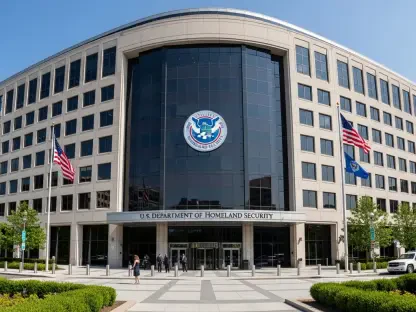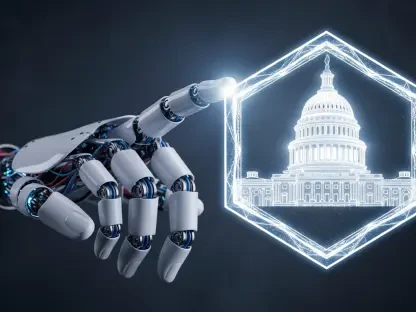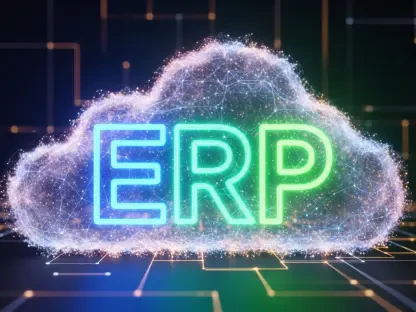In recent years, the United States has faced increasing challenges in its security clearance processes, with inefficiencies and redundancies hampering national security efforts. The current security clearance system is often viewed as a bureaucratic tool specific to agencies rather than a qualification tied to individuals. This perspective leads to a static approach where clearances depend heavily on employment status, affecting workers who face layoffs or contractual terminations. These circumstances highlight the urgent need for reform, as the existing framework fails to adapt to the evolving national security landscape, creating potential vulnerabilities.
The Disconnect Between Policy and Practice
Redundancy and Inefficiencies
The disparity between policy intentions and practical implementation in the security clearance process has become glaringly apparent, leading to significant inefficiencies. Ideally, clearance reciprocity should facilitate the seamless transfer of security credentials across agencies. However, in practice, the system often falls short, leading to unnecessary delays and redundant investigations. Each time an individual changes roles or agencies, they undergo repetitive clearance processes, even if they have already been thoroughly vetted. This redundancy results in wasted resources and time, ultimately affecting the efficiency of security operations.
Furthermore, this cumbersome system poses an inherent risk to national security by inadvertently permitting insider threats to persist. Delays in the clearance process create gaps in oversight, during which malicious actors may exploit loopholes. The lengthy and redundant nature of these processes also serves as a deterrent to skilled professionals, who might seek opportunities in more streamlined environments. It is imperative to address these inefficiencies to maintain the integrity and robustness of national security protections.
The Impact of Layoffs and Uncertainties
Recent industry layoffs have exacerbated the challenges within security clearance processes. When professionals lose their jobs, they also face the uncertainty of their clearance status, which is often tied to their employment rather than their trustworthiness. This ties into the broader narrative of how clearance is applied, focusing on roles rather than individuals. The loss of skilled, vetted individuals diminishes the available pool of trustworthy professionals, affecting the national security workforce’s readiness and capability.
In addition to reducing the security workforce pool, job-related uncertainties can make professionals more susceptible to foreign influence and espionage. Adversarial nations often exploit the vulnerabilities of recently unemployed individuals, potentially recruiting those with access to sensitive information. The current system requires a dynamic approach that maintains ongoing eligibility for clearance, preserving the investment made in developing trusted personnel. By shifting towards a culture that values continuous vetting, national security can better utilize its resources and better guard against unwanted influences.
The Need for a Paradigm Shift
Establishing a “Clearance Ready Reserve”
To address systemic issues within the security clearance framework, a fundamental shift in approach is needed. The introduction of a “Clearance Ready Reserve” proposes a strategic solution that re-imagines how cleared individuals are managed. Instead of tying clearances to specific job roles, this reserve system maintains a pool of vetted professionals who can quickly re-engage in classified work without numerous clearance processes. Such an initiative seeks to redefine eligibility as a long-term asset, ensuring that the national workforce remains resilient and adaptable to changing security demands.
The establishment of the “Clearance Ready Reserve” would streamline onboarding and bolster national security by acting as a proactive measure against attrition and potential espionage. It acknowledges that clearances are not merely administrative entities but indicators of assured trustworthiness—an invaluable resource for national defense. By treating these professionals as elite members of the security workforce, this approach fosters transparency and builds confidence in the system’s efficacy. Moreover, it encourages greater reciprocity across sectors, allowing for more effective talent deployment where needed most.
Overcoming Institutional Inertia
Adopting such progressive changes poses challenges due to institutional inertia within existing systems. The current culture is rooted in established protocols that resist transformation, even when change is warranted. Overcoming this resistance requires both policy reforms and shifts in cultural attitudes toward security clearances, recognizing their role in supporting national defense infrastructure. The cost of maintaining outdated clearance systems is steep, resulting in lost talent and increased vulnerabilities within national security institutions.
Embracing this paradigm shift would involve reevaluating clearance policies at their core while ensuring commitment to national security standards remains steadfast. Agencies must work collaboratively, reducing bureaucratic barriers and fostering environments that prioritize the strategic management of clearances as essential assets, not merely as bureaucratic hurdles. This initiative necessitates leadership and dedication to create a forward-thinking clearance environment, one that aligns with contemporary security needs while anticipating future challenges.
Building a Resilient Security Workforce
Continuous Vetting and Enduring Reciprocity
The vision for an updated security clearance process involves continuous vetting to ensure enduring reciprocity across agencies and sectors. Adoptive measures will begin with a transition to a system that conducts ongoing evaluations of cleared individuals, assessing their trustworthiness and reliability over time. Continuous vetting embraces technological advancements to enhance monitoring capabilities without intruding on personal freedoms. This approach will reduce the burden of episodic reinvestigations, providing a stable reserve of cleared professionals, ready and able to contribute to national security efforts at any time.
By championing the model of ongoing clearance validation, organizations can better identify potential threats while enhancing personnel mobility within national security projects. This model also encourages the retention of skilled professionals who wish to maintain active clearances without permanently binding them to specific roles. Ultimately, a more resilient clearance system will foster innovation and adaptability, integral components necessary for responding to the evolving landscape of global security threats.
Strengthening Trust and Transparency
Over the past few years, the United States has encountered growing difficulties in its security clearance processes, resulting in inefficiencies that threaten national security. The existing system is criticized for acting more like a bureaucratic tool tailored to specific agencies rather than being a qualification pertinent to individuals. This viewpoint fosters a rigid approach, wherein security clearances are largely contingent upon one’s employment status. Consequently, workers who experience layoffs or the termination of contracts find themselves at a disadvantage. These situations emphasize the urgent necessity for reform, as the current framework struggles to meet the demands of a changing national security environment and risks creating vulnerabilities. The system needs an overhaul to ensure that clearances are maintained with a focus on individual qualifications, rather than being tied to fluctuating employment contexts, to better safeguard the country against evolving threats.









